With Brown-headed Nuthatch ticked off my life list I was excited to get out and about and see my life 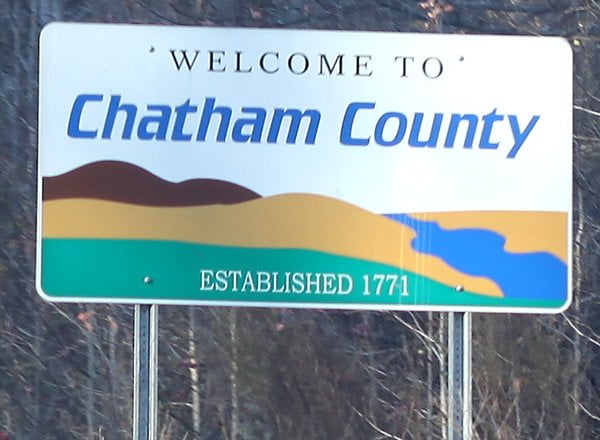 Red-cockaded Woodpecker. Nate arrived at my aunt and uncle’s house just a couple of minutes after my sighting and we were off to Southern Pines, North Carolina, home of the Weymouth Woods-Sandhills Nature Preserve, the destination that Nate had guaranteed would not only have Red-cockaded Woodpeckers, but woodpeckers that would provide positively crippling views. En route I was suckered into being an accessory
Red-cockaded Woodpecker. Nate arrived at my aunt and uncle’s house just a couple of minutes after my sighting and we were off to Southern Pines, North Carolina, home of the Weymouth Woods-Sandhills Nature Preserve, the destination that Nate had guaranteed would not only have Red-cockaded Woodpeckers, but woodpeckers that would provide positively crippling views. En route I was suckered into being an accessory 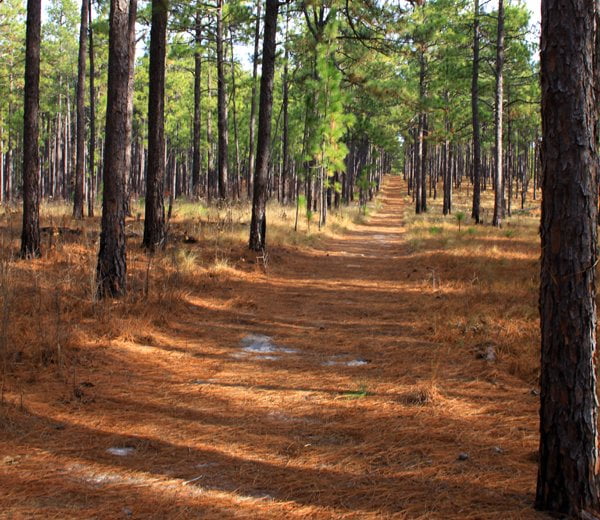 to Nate’s county-listing obsession and was forced to write down each and every species we saw in each and every county. Of course, this paid off later when Nate shared all of those lists on eBird and I suddenly vaulted, for example, to number three all-time in Lee County with eleven species.
to Nate’s county-listing obsession and was forced to write down each and every species we saw in each and every county. Of course, this paid off later when Nate shared all of those lists on eBird and I suddenly vaulted, for example, to number three all-time in Lee County with eleven species.
Anyway, once we arrived I was pleased to discover that Weymouth Woods is a charming preserve with a quality interpretive center, active bird feeders, and well-maintained trails. We quickly started exploring those trails but failed to come up with the woodpeckers we sought, at least not immediately. Nate tried to placate me by pointing out one of the “white-eyed” subspecies of Eastern Towhee,* and, while I was momentarily impressed, especially when a regular “red-eyed” Eastern Towhee appeared next to the white-eyed one, the towhees were no replacement for my life woodpecker.
Of course, while we were looking for the woodpecker we constantly came across other birds, including Dark-eyed Juncos, White-throated Sparrows, Pileated Woodpecker, and a bunch of other species. I was most impressed by another woodpecker, a Red-headed Woodpecker, that we rarely see in New York but that is relatively common in the south. Though the light was not the best I managed what I think is a pretty impressive shot.
It was not long after the Red-headed Woodpecker encounter that I heard a call note unlike any I had ever heard before. Nate heard it too, and it wasn’t long before he spotted the source of the call, which was, probably not surprisingly to those who already read Nate’s description of our day, a Red-cockaded Woodpecker!
I drank it, digiscoped the heck out of it (I still can’t figure out why the Red-headed Woodpecker shots, for which I had much worse light, came out better), and just in general appreciated the sight of a new-for-me woodpecker. Picoides borealis is an endangered bird and I hope that it manages to hold on and survive for many millions more years.
After our woodpecker encounter we continued birding the rest of the day, mostly doing more county listing, and seeing some good birds like Bald Eagle, Hooded Merganser, Belted Kingfisher, a huge flock of Chipping Sparrows, Bonaparte’s Gull, and a whole big bunch of other stuff but it was all anticlimactic after the lifer was done. We did try, to some degree, for Bachmann’s Sparrow, but it was unlikely to begin with and there were lots of other birds to distract us, including more Red-cockaded Woodpeckers like the one above.
Altogether it was a great trip to North Carolina and I would be happy to visit again but hopefully in spring when more birds are around and the temperatures aren’t as cold as winter in New York!
*The “white-eyed” subspecies of Eastern Towhee pictured here, one of two white-eyed subspecies is Pipilo erythrophthalmus rileyi while the “red-eyed” subspecies that we spotted, one of two “red-eyed” subspecies of Eastern Towhee is the nominate, P. e. erythrophthalmus.
…


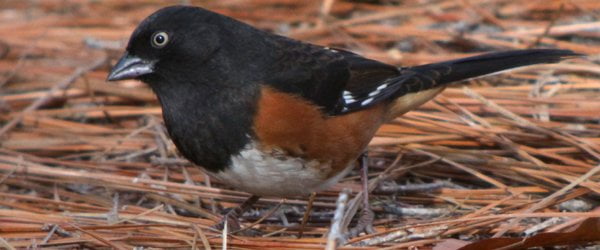
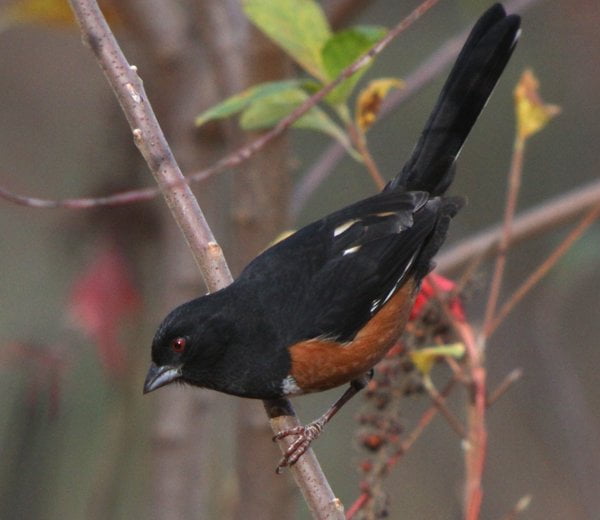
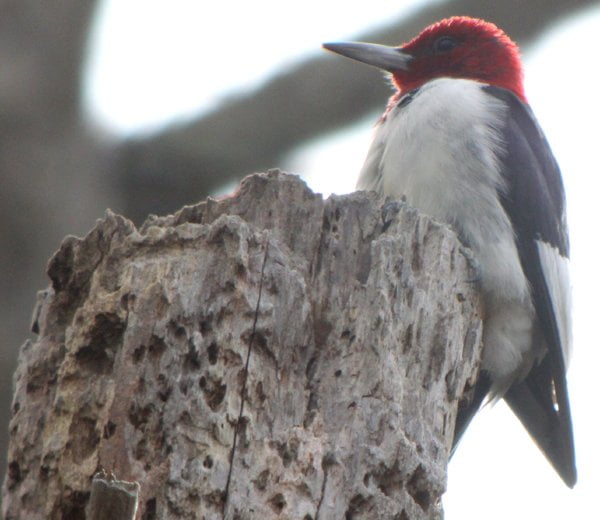
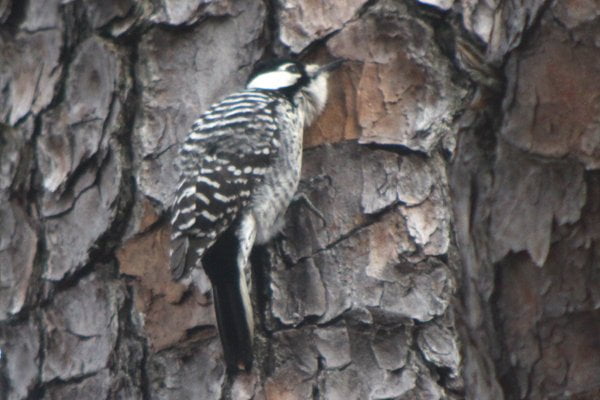
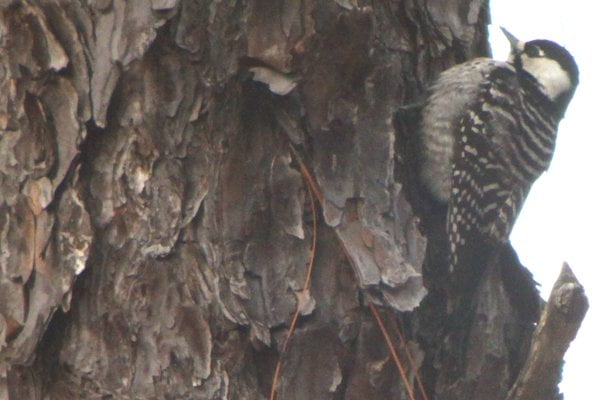
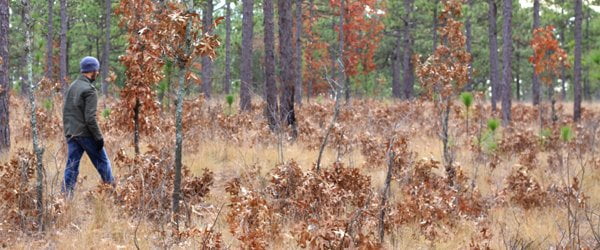











“En route I was suckered into being an accessory to Nate’s county-listing obsession and was forced to write down each and every species we saw in each and every county.” — HAHA, welcome to my world Corey!! 🙂 And on your next trip to NC, bring Daisy and Desi!
I was just in some Mississippi pineywoods this morning seeing many of the same species, including 2 clusters of RCW. Love ’em! I’m glad you got to experience the southern pineywoods. Also, I had no idea white-eyed towhees got that far north. How common are they up there?
Had stopped at a gas station or something we totally would be #1 in Lee County. I wasn’t thinking.
Also, I think the white-eyed Towhees in NC are rileyi rather than alleni, but I could be wrong. Both have white eyes.
@Nick- They’re only in the Sandhills, a few counties in south central NC. As far as I know, this is as far north as they get, but Virginia may have a few records too.
One of these days (hmm… June?) I have to get down there to see the NC Red-cockaded and Red-headed Woodpeckers and get some pics of my own!!!
@Danielle: I was glad to play the role of Nate’s wife for the day…wait, that doesn’t sound right at all!
@Nick: It is a great environment and I am glad that I left a bird on the table as an excuse to return.
@Nate: Sure, make me look dumb in front of all the cool kids…now I have to go make corrections…sigh.
@Christopher: I like that plan! What kind of genius thought that up?
@Nate: Are there also red-eyes breeding in the state or are those wintering birds?
@Nick- The red-eyed birds are present year-round across the state. They breed everywhere.
According to my cursory research (google), there are supposed to be white-eyes on the coastal plain too, but I’ve only ever seen the red ones when I’ve been out there. I’ll have to check Pyle when I get home.
So red and white eyes co-occur in the limited areas white eyes occur? Neat.
That’s a good question and I’d offer a qualified yes.
Red and white-eyed populations definitely co-occur during the winter in the Sandhills, but I don’t spend a whole lot of time down there in the spring and summer (My trips are typically woodpecker-centric and RCWs can be much tougher to find when they’re nesting), so I don’t know if the red-eyed birds go so far as to have adjoining breeding territories to the white-eyed birds or not. I’ve seen red-eyed birds down there as late as April, for what it’s worth.
For all I know, spring and summer could be exclusively white-eyed. I don’t know enough to say for sure.
I should say, for all I know, spring and summer could be exclusively white-eyed in the immediate area. They definitely nest within say, five miles of each other.
I hope Corey will allow me to give a plug here for The Nature Conservancy’s Piney Grove Preserve in southeastern Virginia, where I saw my life Red-cockaded Woodpecker. The preserve was purchased by TNC in 1998, and has been managed since as a habitat for RCWO’s. They do prescribed burns and, in the beginning, translocated RCWO’s from other areas, including NC. Originally closed to the public, there is now a public trail through the preserve, open Feb. – Oct. : http://www.nature.org/wherewework/northamerica/states/virginia/preserves/art4982.html
While trying to find the woodpeckers from a public road, I was fortunate to run into a TNC staffer who talked up a storm about the prescribed burns. A lot of community work went into educating the people in the area about the burns, so they wouldn’t protest. The staffer took me for a walk through a recently burned area (on the way to the active nests). Let me tell you, those burn stains don’t come off your hiking pants! I have been told that they are stains of honor.
@Nate: frankly, that sounds like a future split. Or at the very least, a reasonably good candidate for one. Which will mean Corey will have to make even more corrections to his post, regarding the “not a replacement for my life woodpecker” punch line.
@Donna: No problem. I’ll be patiently awaiting a big fat check from TNC for the advertising. 🙂
@Jochen: We already split the towhees once and are not going to do it again. If only to save me having to edit this post…
@Corey: I know … those taxonomic cowards! 😉
Corey——what great birds! I’m glad you got the Red-cockaded Woodpecker and a really nice shot of the Red-headed one too.
And re: the towhees, I love the fact that every day when I tune in too 10,000 Birds, I learn something new. 🙂
Meredith, you’re not the only one who learned about the towhees!
Next, 10,000 Birds will be offering Continuing Education Credits.
Donna, what do you mean, next? You haven’t enrolled in 10,000 Birds University yet?
We have beenn graced with two towhees at our feeder sights. we did not know what these birds were being Newyorkers transplanted to Mooresville, North Carolina. They are a beautiful bird and would love to know are they normally in this area, or have we just been lucky to see them ? Love some info as to are they monogamis, do they return with seasons or stay here . please any info appreciated.tyvm